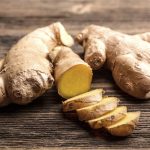
The volumetric diet does not match the perception of a diet where you restrict your diet and eat bland, tasteless food.
When people think about diet and weight loss, they think of things that do not seem fun. Restricting intake, eating flavorless food and avoiding rich food are what often come to mind when we think of these two terms. The volumetrics diet, however, goes against all these dieting and weight loss misconceptions and preconceptions. Instead, it focuses on fullness and nutrition.
Food Energy Density
The mind behind this weight loss program is Barbara Rolls, PhD. of Penn State University. She explains that the key to this diet is to find out the energy density or caloric concentration of foods. One can do this by dividing the number of calories by the number of grams.
Dr. Rolls advice’s that the lower the resulting number is, the more efficient the food is for the diet. This is because eating food that gives less calories for the same amount that one normally eats will more effectively help with weight loss without sacrificing taste or feeling deprived.
More Fiber and Water Content
Another main principle of the volumetrics diet and weight loss plan is to go for versions of food that have more fiber and water in them. Note that the research warns that drinking water alone is not satisfying or nutritious enough. In this sense, one will be better off eating fresh fruits than their dry counterparts.
Still, if you love raisins or dried mangoes feel free to eat some, but be sure to have grapes or fresh mangoes This is because water is very filling, and it also makes circulation and digestion easier and more effective. The body will thus, be able to absorb more nutrients while keeping itself in shape.
Fiber is Important
Fiber is also a key in this diet because, apart from being very filling, it cleans the body of toxins and unwanted fat. To incorporate fruits and fiber into one’s diet, Dr. Rolls suggests adding them to foods that normally do not have them. Add them to foods that you love.
Spicing Up Your Food
Try adding apples to your chicken burger. Put asparagus in your mac ‘n’ cheese. You can also substitute ingredients to more natural and energy dense foods. For example, you can eat pancakes with a blueberry or raspberry syrup instead of maple. Replace potato chips with healthier options like banana chips or soy chips. This would actually even spice up your boring meals and snacks without using up so much time, money and effort.
The truth is that many grocery stores, restaurants, food trucks and markets now sell ready to eat food that follow the volumetrics diet. The volumetrics diet also goes with the advice of nutritionists and national health agencies, which is to consume more whole grain foods, more fruits and vegetables and less of processed food and carbohydrates.


